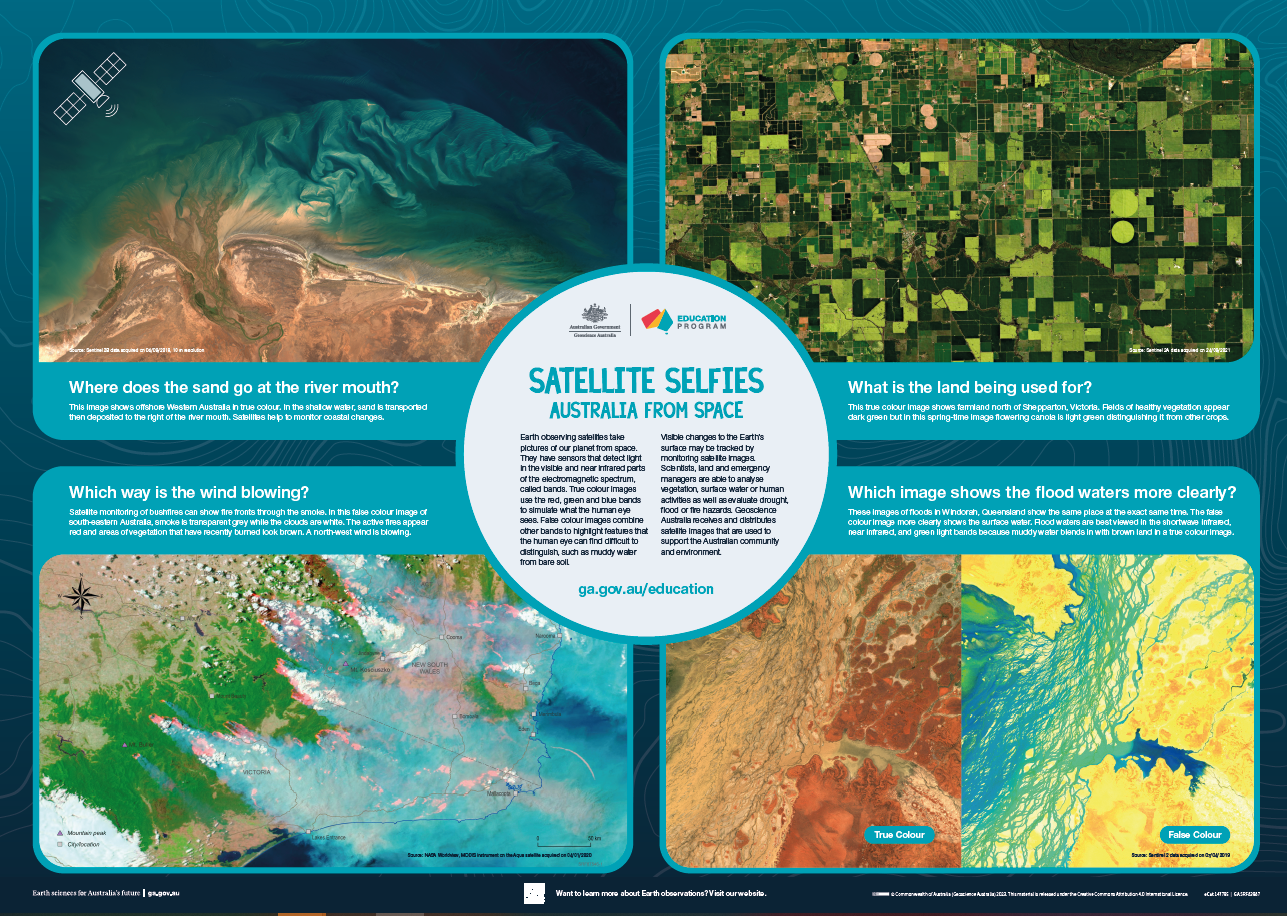earth observations
Type of resources
Keywords
Publication year
Topics
-
<div>The A1 poster incorporates 4 images of Australia taken from space by Earth observing satellites. The accompanying text briefly introduces sensors and the bands within the electromagnetic spectrum. The images include examples of both true and false colour and the diverse range of applications of satellite images such as tracking visible changes to the Earth’s surface like crop growth, bushfires, coastal changes and floods. Scientists, land and emergency managers use satellite images to analyse vegetation, surface water or human activities as well as evaluate natural hazards.</div>
-
Petascale archives of Earth observations from space (EOS) have the potential to characterise water resources at continental scales. For this data to be useful, it needs to be organised, converted from individual scenes as acquired by multiple sensors, converted into ‘analysis ready data’ and made available through high performance computing platforms. Moreover, converting this data into insights requires integration of non-EOS datasets that can provide biophysical and climatic context for EOS. Digital Earth Australia has demonstrated its ability to link EOS to rainfall and stream gauge data to provide insight into surface water dynamics during the hydrological extremes of flood and drought. This information is supporting the characterisation of groundwater resources across Australia’s north and could potentially be used to gain an understanding of the vulnerability of transport infrastructure to floods in remote, sparsely gauged regions of northern and central Australia.

